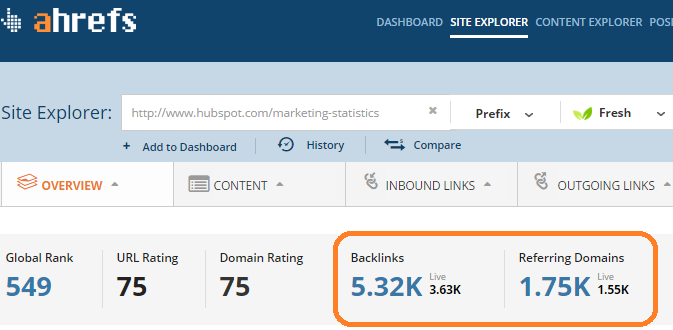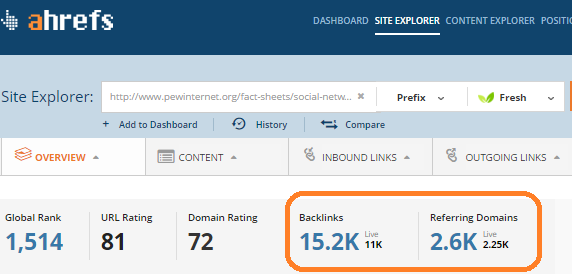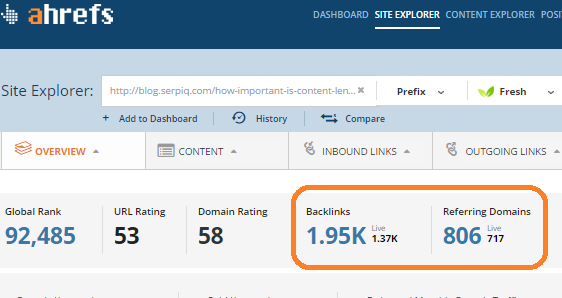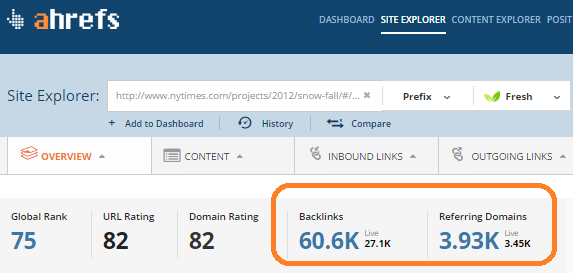“Just write more content!”
I can’t tell you how many times I’ve read advice like this on various marketing blogs. It’s as if saturating the internet with even more blog posts, eBooks, and guides will somehow help you to get the links you need.
The truth is that while publishing content is important, it is absolutely essential to understand how to publish the right kind of content.
It’s not just a coincidence that some content attracts more links than others. Yes, a big part of it has to do with your outreach efforts, but it is also directly related to the type of content you’re trying to promote.
In this post, I’m going to tell you what kind of content you should create to get more links and what kind of content you need to avoid.
Is There a Correlation Between Share Counts and Backlinks?
First things first: is there any correlation between the number of shares a piece of content receives versus its backlink count?
Common sense would say yes. After all, if a piece of content is popular (i.e. it has a lot of shares), it should also be heavily linked to by bloggers and webmasters.
However, according to a study conducted by Moz and Buzzsumo, while there is still some correlation between shares and links, the study found that out of 757,317 well-shared posts, over 50% still had zero external backlinks.
After analyzing over 100,000 random posts, this is the result of the study:

Since social signals don’t necessarily influence rankings, if your goal is rankings, you’ll need to come up with something a little better than just a sensational headline. You’ll need to craft content that can actually attract links and not just social shares.
So what kind of content actually gets links?
Content that Gets Links
In 2012, Moz dug through its content archives to figure out what kind of content gets links. Its results weren’t exactly surprising: posts with images receive more links than posts without images:

People find it easier to digest content that is visually appealing, as opposed to just reading plain text. Remarkably, the brain processes visual information 60,000 times faster than the time it takes for the brain to decode text. Since the advent of the internet, with consumers living fast-paced, on-demand lives, it’s essential to connect to your readers from a visual standpoint in order to keep them reading on your site.
In addition, the above study found that there was a clear correlation between word count and backlinks. Longer content portrays the content is more in-depth, well researched, and credible, increasing the likelihood of people linking to it.
So, the takeaway is if you’re trying to create a linkable asset, be sure to create content that is longer, more in-depth and contains visual content as well. Quality over quantity, if you will.
You may even want to consider creating a separate ‘resource’ section on your site, especially for in-depth content or guides. Besides allowing you to be more creative with your design, this will also make your in-depth content stand out, and help to distinguish it from the millions of other blog posts that are being published on a daily basis.
Studies, Surveys, and Research Data get Links
There is, however, some content that can yield great results, even though it doesn’t meet the above criteria.
For example, take a look at this page on marketing statistics from HubSpot. It is a relatively simple page that curates the latest marketing statistics from across the web. It doesn’t stand out in neither design nor depth. However, according to ahrefs, it has earned an astonishing 5,320 backlinks from thousands of referring domains:

This page gets links because it has data and as humans, we love statistics and comparing numbers. Writers, bloggers, editors frequently need a source or marketing statistic. HubSpot’s brand strength coupled with freshly updated (and accurate) stats means that people are more likely to link to it.
If HubSpot’s curated list of marketing statistics gets thousands of backlinks, natural order dictates that the studies HubSpot is basing its stats on should also get a lot of backlinks.
And the numbers back this up. Pew’s social media fact sheet, for example, has over 15,000 links from over 2,500 root domains!

Original studies do particularly well from a link building point of view, since they not only get editorial links but also links from data compilations (such as HubSpot’s list of marketing stats).
For link builders, this means original studies or research can make great linkable assets. And if you don’t have the time or budget to put one together, curating the best studies, statistics, and data on a topic is the next best thing.
Answer Common Industry Questions
As an expert in your industry, you’ll be surprised how much you can help out others with your experience and knowledge base. How about putting together an in-depth FAQ page where you chronicle questions you get from your customers and the answers and tips you gave them? You could update this on a weekly basis and give a shout out to the customers who asked the questions.
Another approach that can reap significant benefits is offering a definitive answer to a common question that is otherwise under-explored in your industry.
For example, lots of bloggers and marketers have wondered what the ideal content length is for SEO. Most go with personal preference or analyze the performance of their older content.
SERPIQ adopted a data-centric approach to this question and came up with an absolute answer based on research. It analyzed thousands of top 10 results and concluded that the ‘ideal’ length is north of 2,000 words. Webmasters and bloggers consequently rewarded SERPIQ with thousands of backlinks from over 800 root domains.

Great Design Equals Great Links
Some of you may recall back in 2012 when the NYTimes published a long story titled ‘Snowfall’. It was an exquisitely designed piece that reportedly cost over $100,000 to produce. It was the topic of tons of conversation online, both for the quality of the reporting and the design.
Understandably, the story was shared extensively, but it was also linked to thousands of times by publications big and small, many of whom focused on the story’s exceptional aesthetic design.

Of course, such a large production budget isn’t feasible for the typical small business. However, it does highlight the importance a great design layout has in getting links.
You’ll also find that websites that focus on content presentation as much as content depth get a lot of links as well.
For some examples and ideas, check out HelpScout’s beautifully designed blog posts, or take a look TheVerge’s long-form journalism, and be sure to check how many links each piece of content gets.
Oh, and besides the links, your readers will love you for it!
Editor’s Note: To learn more about link building and promoting your content online, listen to this Marketing Nerds podcast with Eric Enge.
Content That Doesn’t Work
Avoid creating content that is promotional at all costs. No one is interested in linking to a page where you’re telling the world how great you or your company are. Besides content that is outwardly promotional, which should be fairly obvious, you also shouldn’t pack your content with links back to your home or product pages. Webmasters will recognize this as a form of self-promotion and it will greatly decrease your chances of getting a link.
Also, avoid content that doesn’t offer anything unique and isn’t useful or helpful in any way. A skimpy article that doesn’t solve a recognizable problem won’t get you any links and surely won’t earn you any new customers. This also encompasses creating un-original content that’s been covered in one form or another a million times over.
There are over 29 million articles on ‘how to floss’, so what else, exactly, is your ‘Definitive Floss Guide’ going to bring to the table?
Conclusion
If you want to start ranking, then you’re going to need links. And in order to get those links, you’ll need to have content that is ‘linkable’ and resonates with both readers and webmasters.
Once you’ve got great content, your outreach will be destined for success and you’ll potentially be on your way to building hundreds, if not thousands, of links, like some of the examples shown above.
Image Credits
Featured Image: Unsplash/Pixabay.com
All screenshots by David Farkas. Taken December 2015.





